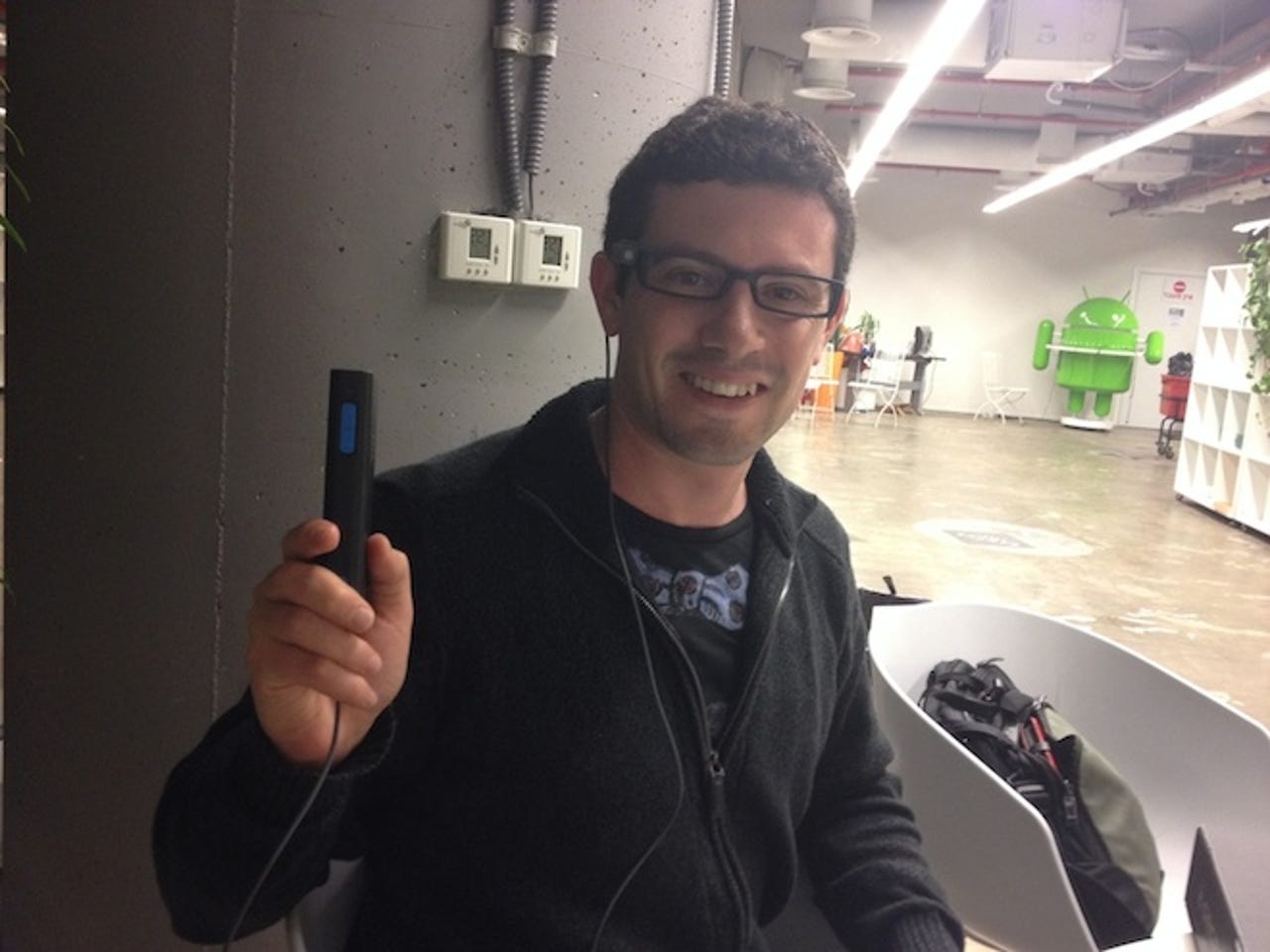OrCam's 'vision' system for visually impaired paves the way for new wearables


An Israeli-developed device to help the visually-impaired "see" contains technology that could end up powering a new category of wearable devices, according to Erez Naaman, VP of engineering at OrCam.
The Israeli startup, barely two years old, has created the first commercially available system to enable blind and visually-impaired people to navigate their surroundings.
More about wearable technology
The OrCam system is promising enough that it has reportedly solicited an investment from Intel's venture capital organization.
OrCam's technology uses cameras, algorithms, and audio to provide what Naaman described as "the next best thing to being able to see clearly". As it's not a medical device, OrCam does not require implants, unlike similar systems developed in the US.
OrCam's product consists of a camera attached to a glasses frame. The camera sees objects, shapes, sizes, words, or anything else around a user, analyzes the image, and tells users what they are 'seeing'.
Using their finger, users point in the direction of the object they want to 'see', and the system instantly announces what it's seen. As a result, a visually-impaired OrCam user could use the system to cross the street, just by pointing at a traffic light and waiting for the system to announce "green light". In a supermarket, users can pick up product and the device will tell them what it is, even reading off the ingredients. The system can read all manner of text: all a user has to do is point to words in a newspaper, book, restaurant menu, or other printed material, and OrCam will read back what they are looking at.
"It's not even a 3D camera," said Naaman. "The system recognizes words, remembers faces and locations, landmarks, describes shapes, and other features that are read back to users, letting them navigate situations successfully."
Besides being first to market, OrCam's system is also a lot cheaper than rivals' with an initial cost of $2,500.
As a solution for the visually-impaired, OrCam holds a lot of promise — but that technology could be put to other uses as well, especially in the up and coming wearable technology space.
It's for OrCam's potential in that space that Intel Capital reportedly invested $6m in the company recently, according to very reliable sources (the $6m was part of an overall $21m that OrCam raised over the past months, the sources said). Neither OrCam nor Israel's Intel spokesperson would confirm the investment.
But, said an Intel spokesperson, OrCam is a good example of wearable tech – and Intel was very interested in developing products using sensors, video cameras, and intelligent algorithms that could be used in wearable devices.
"Intel is running a major event called Make It Wearable, in which developers are presenting new ideas and products using sensor technology," the spokesperson said. One of the five finalists in the first round, for example, called Wisdom Tooth, is a device that is inserted into the mouth and keeps track of a user's oral hygiene; another, called Lovey, lets users keep track of their level of engagement with children, reminding them when they need to read their kids a story, and so on.
With its video and audio technology as well as its database and algorithm components, OrCam would seem to be a natural for wearable tech – and Naaman agrees.
"We have some ideas about other devices which I can't share," said Naaman – but he promised that they would be "game changers" when they came out. "The devices based on our technology are likely to be very different than anything available right now."